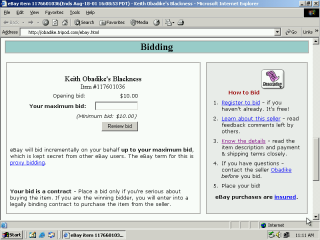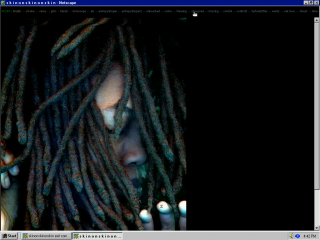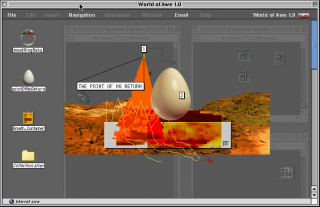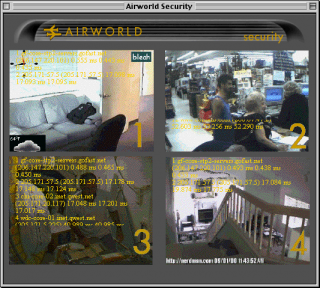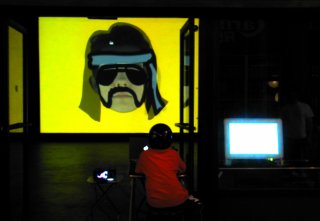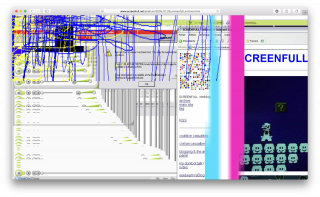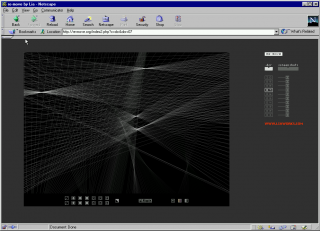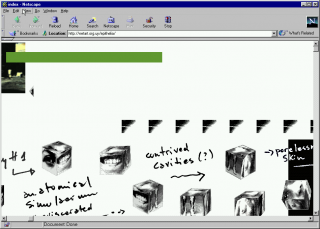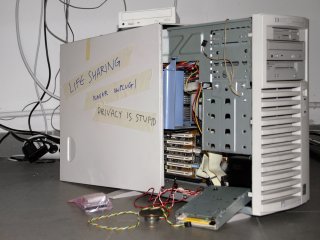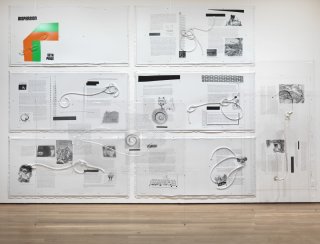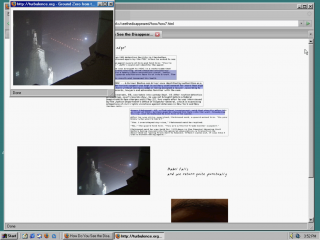Velvet-Strike
Anne-Marie Schleiner, Joan Leandre, Brody Condon
2002
Velvet-Strike is a mod of the first-person shooter video game Counter-Strike. The mod, developed by Anne-Marie Schleiner, Joan Leandre, and Brody Condon, adds “protest sprays” to the game’s existing graffiti function. Velvet-Strike’s sprays ranged from being playfully out of step with the game’s self-serious violence and machismo to spreading explicitly anti-war messages.
Velvet-Strike was developed just after 9/11, coming into existence alongside the United States’ declaration of the “War on Terror.” It was an early intervention into the space where gaming culture and politics converge—a space that has become more contested as gaming has become mainstream. Velvet-Strike was at the forefront of artistic and activist gestures that questioned the militaristic ideologies present in popular video games. Velvet-Strike makes an important argument for the entwinement of “the real” and “the virtual” when it comes to politics and demonstrates the possibilities of activism in the virtual space of video games.
Velvet-Strike (2002). Video courtesy of the artists.
Counter-Strike is a video game that was first developed in 1999 as a mod for the popular sci-fi first person shooter game Half-Life. Counter-Strike replaced Half-Life’s kill-the-aliens objective with kill-the-terrorists. Players join either a team of government operatives or a group of Middle Eastern terrorist militants, and are tasked with defeating the opposition. The mod was turned into a game, which became widely popular in the early 2000s.
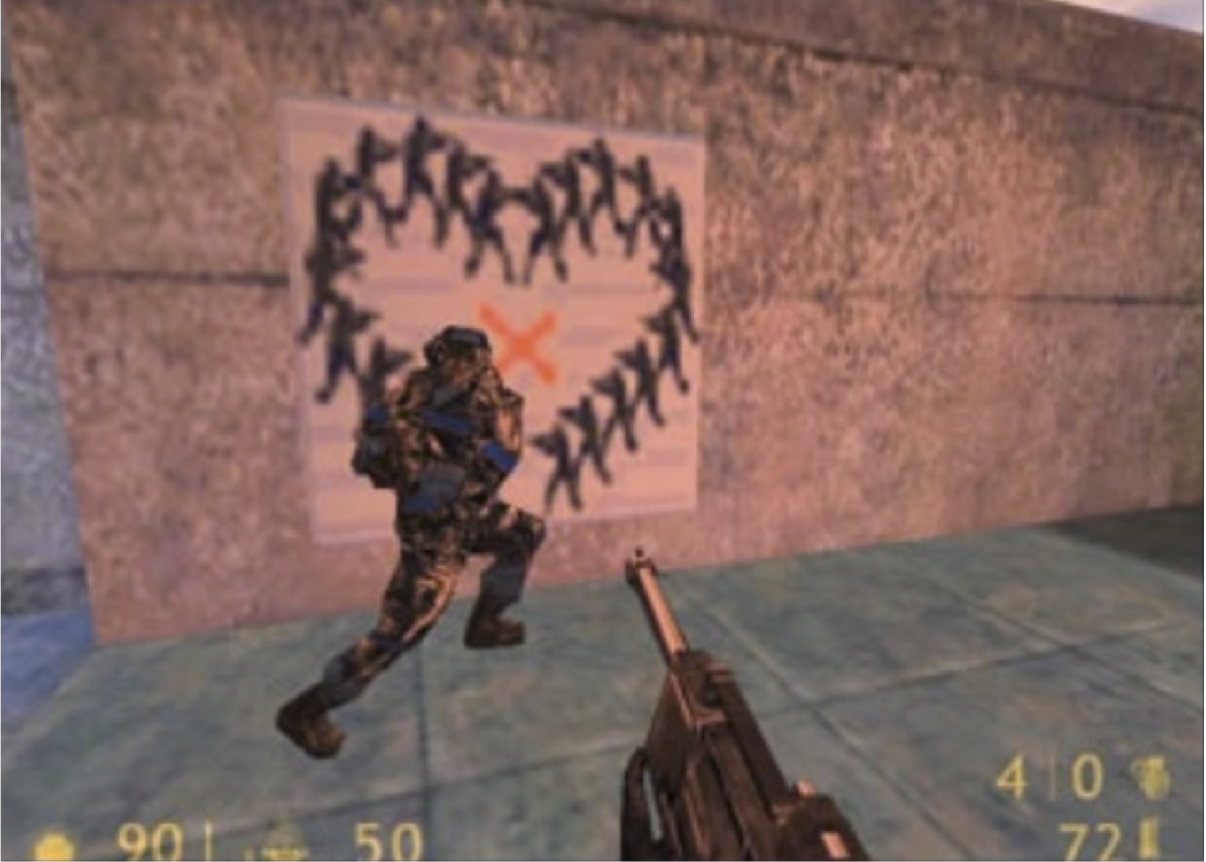 Screenshot from Counter-Strike featuring a spray from the Velvet-Strike mod.
Screenshot from Counter-Strike featuring a spray from the Velvet-Strike mod.
“It was clear, to us anyway, that these [video games] were propaganda spaces. These were spaces were right wing ideology was living an extreme. The nonstop destruction of the other in an arena that never quits.” —Brody Condon
When Anne-Marie Schleiner and Joan Leandre met in Spain—around the same time that the United States was beginning to bomb and invade Afganistan—Schleiner was already interested in the politics of first person shooter games. The two put their heads together and came up with the idea to make an anti-military game mod.
 Velvet-Strike website (2002)
Velvet-Strike website (2002)
Rather than program a full-blown game modification, Schleiner, Leandre, and Condon used the game’s existing graffiti function to create Velvet-Strike. Counter-Strike allowed users to upload custom-designed graffiti designs to spray throught the game’s maps. Velvet-Strike simply uploaded anti-war, anti-military sprays and made them available to players. They also encouraged players to create their own sprays to be made available on the Velvet-Strike website. The Velvet-Strikers performed their modifications live during game-play. They placed their sprays throughout the game’s maps and got killed constantly for doing so.
View Velvet-Strike sprays.
“I was excited at that time with the possibility of public space being extended into the virtual and using game space as a place to get a public message out.” - Anne-Marie Schleiner
Velvet-Strike’s tags were not just explicit anti-military protests. The visuals ranged from an image of two soldiers kissing to pictures of pink teddy bears, calling to mind the women and children affected by real world military conflict.
“I’m concerned with what game violence is coupled with: militaristic, heterosexist boys’ clubs in the real life, outside the game, war time environment of the ‘war on terrorism.’ We are also opposed to military fantasy masquerading as ‘realism.’ I am also disturbed that the binary logic of the shooter is being implemented on a global military scale.” —Anne-Marie Schleiner
Read Mariam Naziripour’s essay on the politics Velvet-Strike.
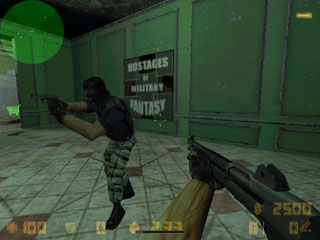 Screenshot from Counter-Strike featuring a spray from the Velvet-Strike mod.
Screenshot from Counter-Strike featuring a spray from the Velvet-Strike mod.
The project was met with hostility from the gaming world. Many reactions from players were angry and misogynist. They particularly resented what they percieved as a woman’s intervention in the game, and accused Schleiner, Leandre, and Condon of a naïvety around gaming. For instance, one email read: “if you don’t realize that videogame is just a VIDEOGAME, an that its a fake world, well then, GO PLAY WITH YOUR BARBIE!”
In actuality, Velvet-Strike consciously attempted to complicate “the real” and the suppositions of the gaming world as an unreal space, particularly when it came to war and terrorism. Counter-Strike presented a kill-the-bad-guys version of war, and Velvet-Strike reintroduced the complexity, horror, and human element of armed conflict into its narrative.
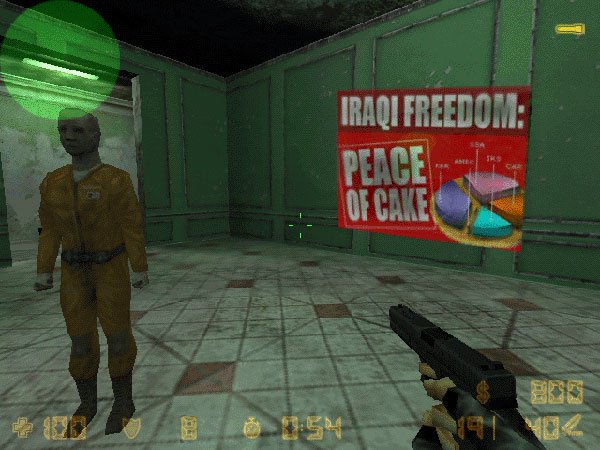 Screenshot from Counter-Strike featuring a spray from the Velvet-Strike mod.
Screenshot from Counter-Strike featuring a spray from the Velvet-Strike mod.
In contrast to how Counter-Strike players took it, Velvet-Strike, was well-received in contemporary art contexts. Documentation of the project was exhibited in the Whitney Biennial in 2004, and the project has toured exhibition spaces internationally.
